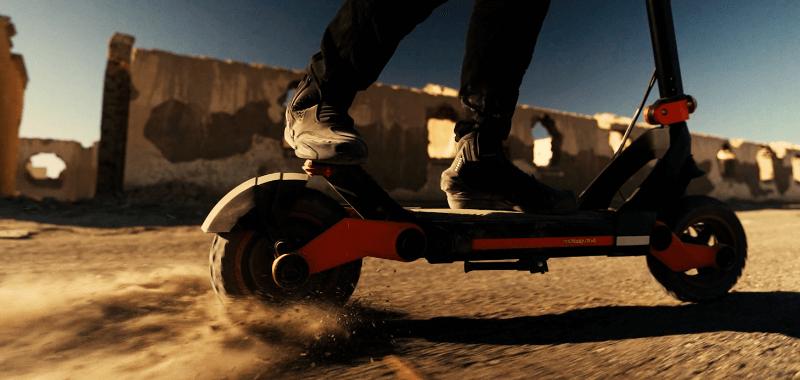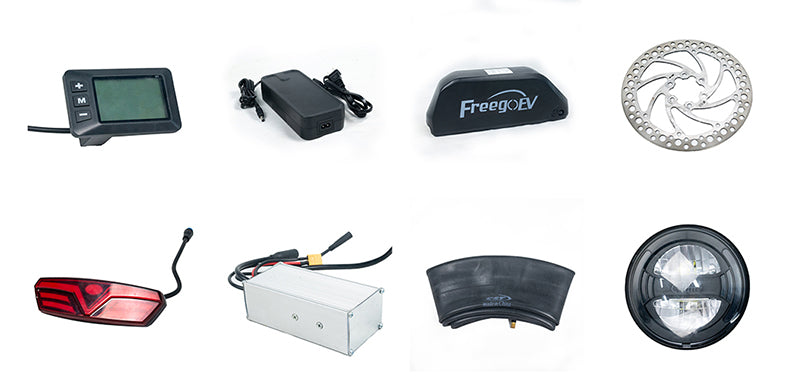The quality of a bike depends entirely on its tires. Standard tires and fat tires are usually the only two types of e-bike tires available. The two tires' sizes, upkeep requirements, weights, cost, and even pressure restrictions vary. Your choice of tires will consequently have an impact on your bike's handling, suspension, and range in addition to your speed.
In general, there are advantages and disadvantages between e-bikes with fat tires and bikes with standard tires. Bikes with standard tires, for instance, perform better in terms of handling on hard surfaces. But, off-road e-bikes are perfect for using fat tires. The selection of the best bike tire for you is our aim in this article.
What Is Standard Tires Bike?
For the city, urban, and road cycling, including racing and commuting, standard tires are commonly used. They are thin, smooth-tread tires. Particularly if you are a cycling enthusiast, they offer a secure grip that is simple to use. For all kinds of bicycles, including e-bikes, standard tires have always been available. Because of their cleanliness and fitted shapes, they are regarded as being speedy.
Typically, standard tires range in width from 1.5 to 2.5 inches. Because they are often light, their tiny size makes assembly simple. The weight of fat tires is more than that of standard tires because of their larger size. For rocky terrain, however, fat tires are preferable.
Riders who use standard tires benefit greatly from the gears' ease of adjustment. Additionally, it is easier to operate the pedals, particularly when shifting gears.
High air pressure is another benefit of fat tires. This actually means that standard tires do not rip as easily. This is significant since the majority of standard tire users cannot afford to stop their daily trips to work on their tires.
The durability of e-bikes with standard tires is also greater than that of other e-bike tire types. Consider purchasing an e-bike with standard tires if you require one to tour the city with ease.
Advantages
- Since standard tires are made for speed, bikes using them are typically faster.
- Due to mass manufacture brought forth by their popularity, they are typically inexpensive.
- You can rely on a strong grip.
- Standard tire bikes are simple and easy to ride and are better suited for novice riders.
- They are very effective, especially when it comes to traveling long distances quickly.
- Higher rolling resistance than fat tires is maintained
- Fewer pull cords are included on bikes with standard tires, making them easier to ride on sloppy terrain.
- Tires don't need to be replaced all that frequently.
- Standard-tire bikes are often strong.
Disadvantages
- Uneven and Rough road surfaces are not appropriate for standard tires.
- They are not appropriate for camping trips or mountaineering.
- Excessive acceleration is not permitted by standard tires since it can cause accidents on major highways.
- On standard tires, smooth braking is necessary to maintain control.
What Is A Fat Tire eBike?
Large bicycle tires known as "fat tires" are better suited for cycling over rough roads, unpaved, rough terrain, or bumpy surfaces. Large tires are a feature of e-MTB and off-road bikes because of this benefit. Use fat tires on your e-bike if you want to ride on a road that has loose gravel or sand.
Due to their improved balance and ability to be controlled in such conditions, e-bikes with fat tires continue to be a favorite among urban bikers and enthusiastic hikers. In honesty, they offer the best hands-free riding experience.
Since they have excellent traction and are around 4-5 inches wide, fat tire e-bikes can be used on any terrain. They handle the beach, mud, rocky terrain, and even snow paths without difficulty.
The width of the tires causes a large reduction in the bike's pressure, which offers the tire a good grip. The air pressure ranges from 10 to 30 PSI. Although it's a little more challenging to pedal, the rider benefits from improved stability and balance due to all that increased grip.
Also, when riding on rainy roads, you typically don't have to worry about slipping. They are not restricted to steep or hazardous routes, though. Nevertheless, they perform well on smooth asphalt surfaces, which give them an advantage over standard tires.
You should be aware, nevertheless, that a direct repair on a fat tire is more challenging. They require more than one CO2 tank to be inflated, unlike standard tires. Although an electric pump would be more convenient, it can be restarted in just two minutes.
Finally, fat tires offer all the great experiences you can imagine and are extremely convenient for consumers.
Advantages
- E-bikes with fat tires are perfect for off-road riding and hiking.
- Better shock absorption can be achieved with larger tires.
- They are perfect for uneven terrain since they offer a tighter grip than bikes with standard tires.
- Compared to e-bikes with standard tires, fat-tired e-bikes are easy to stop and control.
- E-bikes with fat tires enable you to travel farther at a steady speed.
- In general, fat tires look good and are widely used.
- Since they are made to be adaptable in all weather conditions, fat tire e-bikes are excellent for all seasons.
- Bikes with fat tires are typically thought to be safer than those with standard tires.
- Fat tires can have their air pressure adjusted appropriately.
Disadvantages
- It's difficult to come across a good fat tire e-bike for under $1000 because they are more expensive to acquire and maintain than standard tire bikes.
- Large-tired e-bikes are typically heavier and more difficult to pedal.
- If they are not used for a prolonged period of time, most large tires need special care.
- Since they are frequently hard to locate, it can be particularly challenging to find replacement parts for e-bikes with large tires.
- 26-inch fat tire e-bikes may be too big for anyone under 160 cm due to the bigger outer diameter of fat tire bikes with the same wheel size.
- They are more challenging to make quick fixes for.
Conclusion,
If you require e-bikes that can easily go over rocky, sandy, muddy, or even full of grass areas, fat tire bikes are best for you.
If you plan to use your bike for running, standard tires are excellent. Standard tires are also better for you if you plan to ride on asphalt or paved roads.







